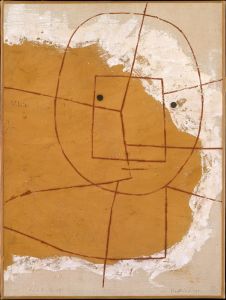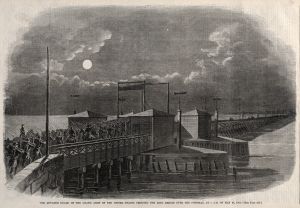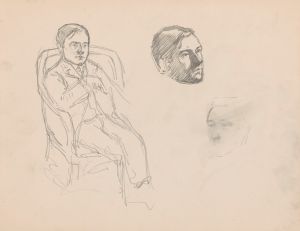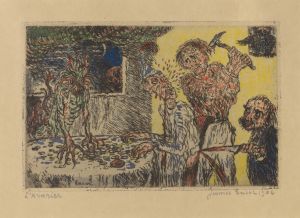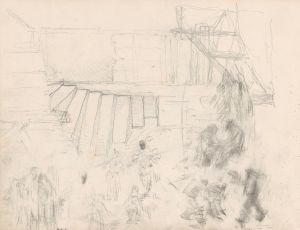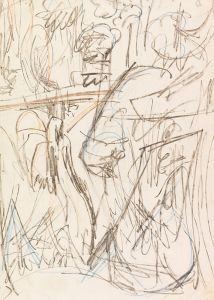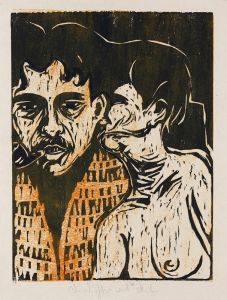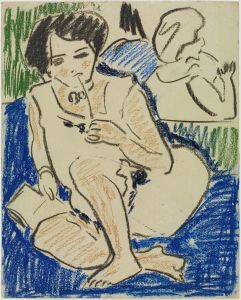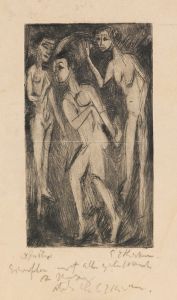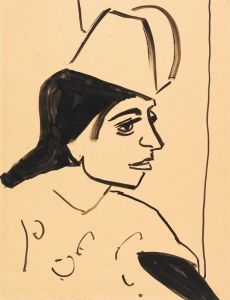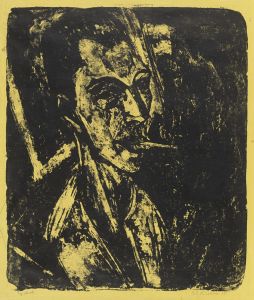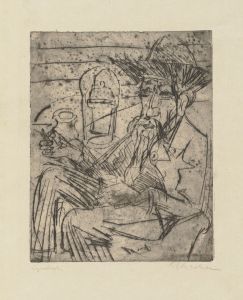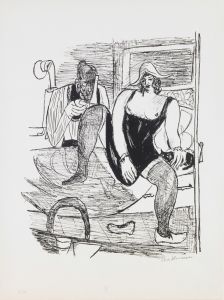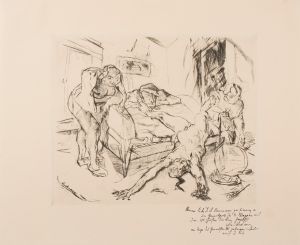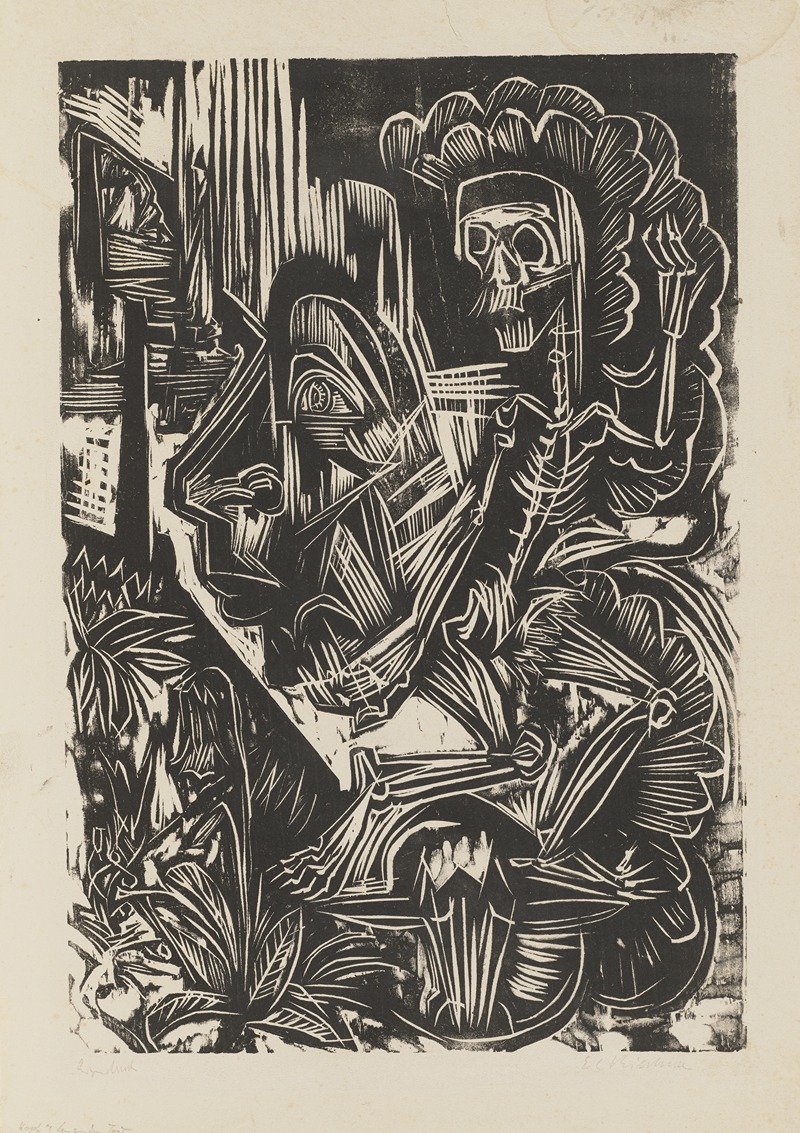
Self-Portrait with Dancing Death
A hand-painted replica of Ernst Ludwig Kirchner’s masterpiece Self-Portrait with Dancing Death, meticulously crafted by professional artists to capture the true essence of the original. Each piece is created with museum-quality canvas and rare mineral pigments, carefully painted by experienced artists with delicate brushstrokes and rich, layered colors to perfectly recreate the texture of the original artwork. Unlike machine-printed reproductions, this hand-painted version brings the painting to life, infused with the artist’s emotions and skill in every stroke. Whether for personal collection or home decoration, it instantly elevates the artistic atmosphere of any space.
"Self-Portrait with Dancing Death" is a notable painting by the German expressionist artist Ernst Ludwig Kirchner. Created in 1915, this work is a profound reflection of Kirchner's personal struggles and the broader context of World War I. Kirchner was a founding member of the influential artist group Die Brücke (The Bridge), which played a crucial role in the development of Expressionism in early 20th-century Germany.
The painting depicts Kirchner himself, rendered in a stark and somewhat distorted manner, which is characteristic of his expressionist style. The self-portrait is notable for its intense emotional content and the use of vivid, contrasting colors. Kirchner's face appears gaunt and haunted, reflecting his inner turmoil and the psychological impact of the war. The background is dominated by the figure of Death, depicted as a skeleton engaged in a macabre dance. This imagery is a powerful symbol of the omnipresence of mortality and the existential dread that pervaded Europe during the war years.
Kirchner volunteered for military service at the outbreak of World War I, but his experience was traumatic. He suffered a mental breakdown and was discharged from the army in 1915. This period of his life was marked by severe psychological distress, which is poignantly captured in "Self-Portrait with Dancing Death." The painting can be seen as an expression of Kirchner's confrontation with his own mortality and the horrors of war.
The composition of the painting is dynamic, with sharp, angular lines and a sense of movement that enhances the feeling of anxiety and tension. The use of color is particularly striking; Kirchner employs a palette of bold, often clashing hues to convey the intensity of his emotions. The skeletal figure of Death is rendered in stark white, standing out against the darker, more chaotic background, emphasizing its menacing presence.
"Self-Portrait with Dancing Death" is housed in the Kunstmuseum Basel in Switzerland, which holds an extensive collection of Kirchner's works. The painting is considered one of Kirchner's masterpieces and a significant example of expressionist art. It not only provides insight into the artist's personal experiences but also serves as a poignant commentary on the broader human condition during one of the most tumultuous periods in modern history.
Ernst Ludwig Kirchner's contributions to art extend beyond his paintings; he was also a prolific printmaker and sculptor. His work had a lasting impact on the development of modern art, influencing subsequent generations of artists. Despite his struggles with mental health, Kirchner continued to create until his death in 1938, leaving behind a rich legacy that continues to be celebrated and studied.
In summary, "Self-Portrait with Dancing Death" is a powerful and evocative work that captures the essence of Kirchner's expressionist style and his personal response to the traumas of war. It remains an important piece in the history of modern art, reflecting both the individual artist's psyche and the collective experience of a generation marked by conflict and uncertainty.





